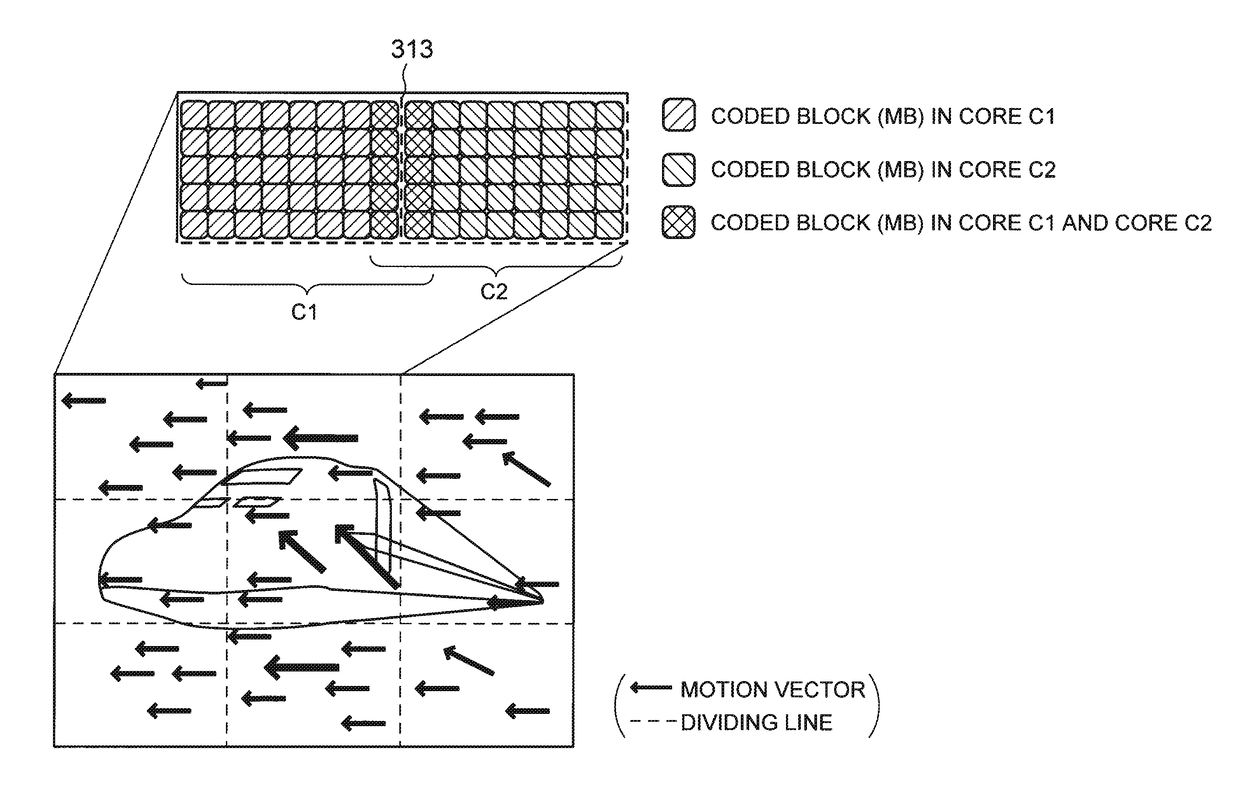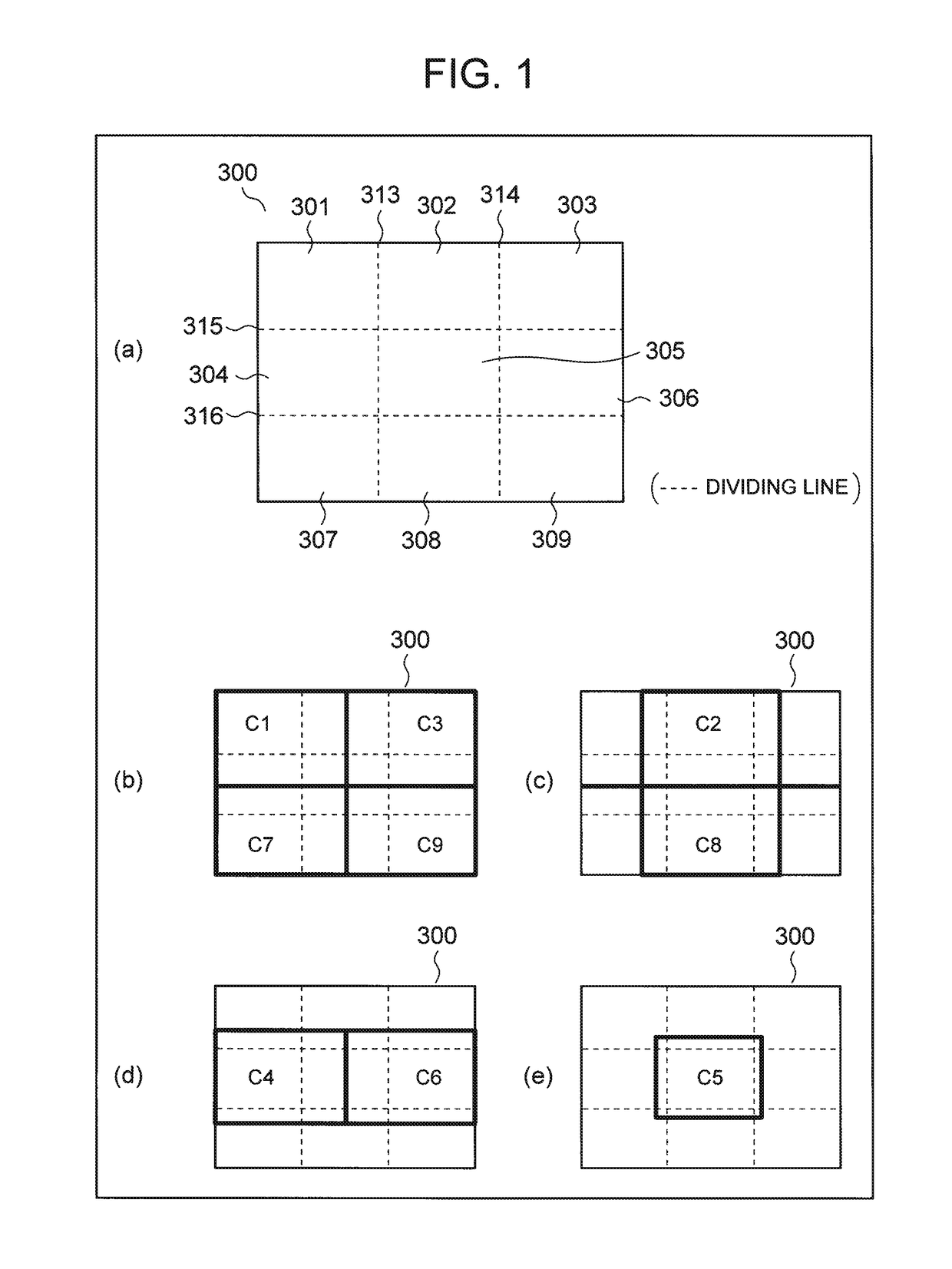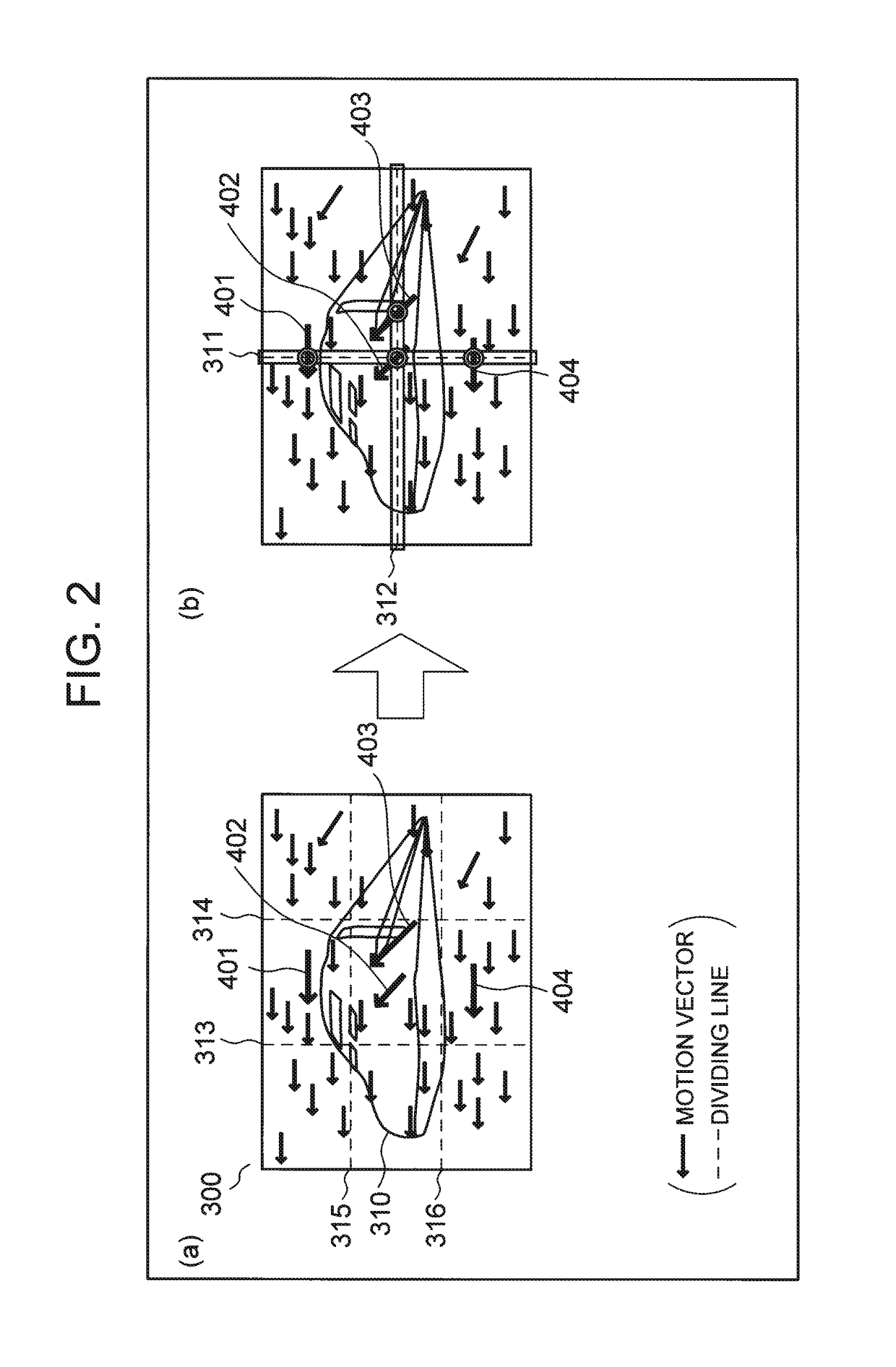Video encoding device, video encoding method, and program
a video encoding and video encoding technology, applied in the field of video encoding devices, can solve the problems of not revealing a technique for distributing the load in the video encoding device, and achieve the effects of distributing the processing load, preventing a decrease in image quality, and reducing image quality
- Summary
- Abstract
- Description
- Claims
- Application Information
AI Technical Summary
Benefits of technology
Problems solved by technology
Method used
Image
Examples
Embodiment Construction
[0177]The following describes an exemplary embodiment of the present invention with reference to drawings.
[0178]FIG. 1 is an explanatory diagram for describing an example of a process of a video encoding device in an exemplary embodiment of the present invention. (a) in FIG. 1 depicts an example of screen division. In the example depicted in (a) in FIG. 1, one screen 300 is divided into 3×3 (=9) equal-sized divided screens 301 to 309.
[0179](b) to (e) in FIG. 1 are explanatory diagrams for describing areas to be encoded by cores C1 to C9. The structure of the video encoding device in this exemplary embodiment is the same as the structure depicted in FIG. 36. The cores C1 to C9 correspond to the first video encoders depicted in FIG. 36. Though FIG. 36 depicts four first video encoders 102A, 102B, 102C, and 102D, FIG. 1 depicts an example of using nine cores C1 to C9.
[0180]As depicted in (b) to (e) in FIG. 1, the cores C1, C3, C7, and C9 respectively perform an encoding process for upp...
PUM
 Login to View More
Login to View More Abstract
Description
Claims
Application Information
 Login to View More
Login to View More - R&D
- Intellectual Property
- Life Sciences
- Materials
- Tech Scout
- Unparalleled Data Quality
- Higher Quality Content
- 60% Fewer Hallucinations
Browse by: Latest US Patents, China's latest patents, Technical Efficacy Thesaurus, Application Domain, Technology Topic, Popular Technical Reports.
© 2025 PatSnap. All rights reserved.Legal|Privacy policy|Modern Slavery Act Transparency Statement|Sitemap|About US| Contact US: help@patsnap.com



